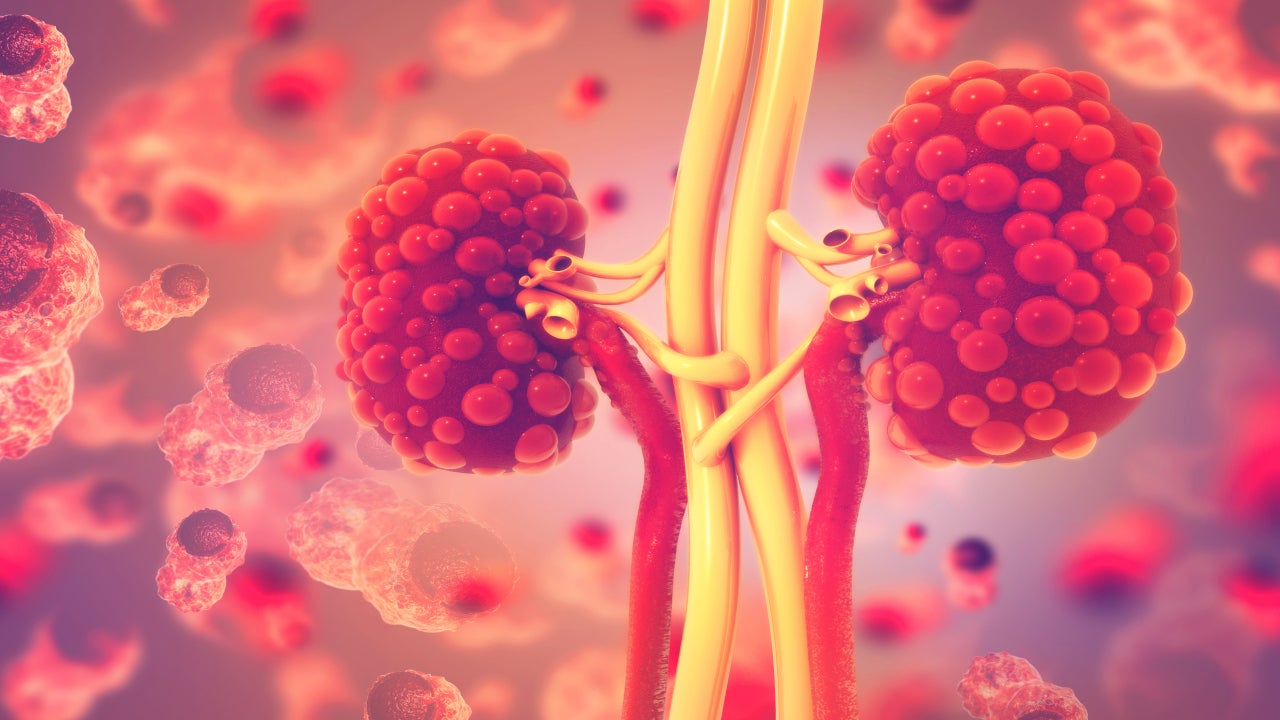Travere Therapeutics’ sparsentan Phase III bid in IgA nephropathy (IgAN) has an indeterminate connection to proteinuria reductions seen in a related kidney disease study, experts said. As such, IgAN’s less aggressive and variable nature makes efficacy conclusions challenging.
While focal segmental glomerulosclerosis (FSGS) and IgAN are both glomerular disorders, they have different pathophysiologies, with IgAN being less rapidly progressive in comparison to FSGS. The latter carries a higher risk of increasing proteinuria and progressive kidney disease. Many IgAN patients can have stable proteinuria levels, which makes it tougher to observe efficacy in a variable patient population, experts interviewed by this news service said.
Nonetheless, the demonstrated efficacy of angiotensin-converting enzyme (ACE) inhibitors and angiotensin II receptor blockers (ARBs)—of which sparsentan employs one of its mechanisms—in FSGS and IgAN make it possible for sparsentan to impact proteinuria in an effective manner, said one expert. One analyst was also reasonably optimistic about the Phase III PROTECT IgAN trial’s success. The antiproteinuric effects seen in the Phase II FSGS DUET, combined with high conviction for the mechanism from experts, bode well for positive data in the IgAN trial, the report stated.
Sparsentan’s Phase III FSGS data is expected next month, while the company expects to complete enrolment in the IgA nephropathy PROTECT study in 2021 with 36-week interim proteinuria data in 3Q. This data will support Travere’s bid for an accelerated approval and a conditional marketing authorisation.
GlobalData consensus forecasts estimate overall revenues for sparsentan to be $522m in 2026. Travere declined to comment on this story, citing upcoming Phase III FSGS results. The company’s market cap is $1.28bn.
FSGS and IgAN similarities still limit data extrapolation
There are some commonalities between FSGS and IgAN, but the underlying causes are different, said Dr Nigel Brunskill, professor of Renal Medicine, University of Leicester, UK. While FSGS is characterised by scar tissue developing on glomeruli, the IgA antibody accumulates in the glomeruli in IgAN causing inflammation. FSGS has a worse prognosis, but IgAN is more common than FSGS.
How well do you really know your competitors?
Access the most comprehensive Company Profiles on the market, powered by GlobalData. Save hours of research. Gain competitive edge.

Thank you!
Your download email will arrive shortly
Not ready to buy yet? Download a free sample
We are confident about the unique quality of our Company Profiles. However, we want you to make the most beneficial decision for your business, so we offer a free sample that you can download by submitting the below form
By GlobalDataThus, proteinuria reduction in FSGS does not necessarily mean that any benefit can be translated to other glomerular diseases like IgAN, said a European nephrologist. In the DUET trial, sparsentan-treated patients had 45% reductions in urine protein-to-creatinine ratio (UP/C) versus patients treated with the ARB irbesartan when different dose cohorts were pooled for analysis (Trachtman et al.; J Am Soc Nephrol; 2018 Nov;29(11):2745-2754). The PROTECT trial’s primary endpoint also measures proteinuria reduction.
One challenge with evaluating therapies for IgAN is that it does not cause as much proteinuria as FSGS, and while there may be some exceptions, not all IgAN patients experience proteinuria, said Dr Patrick Cunningham, assistant professor of Medicine, University of Chicago Medicine, Illinois. FSGS patients can be symptomatic of nephrotic syndrome at risk of progressive kidney failure, but IgAN in contrast is not usually symptomatic and treatment is aimed at preserving kidney function, said Dr Richard Lafayette, professor of Medicine (Nephrology), Stanford University Medical Centre, Palo Alto, California. Proteinuria in IgAN tends to be subnephrotic, in the range of 1–2g/d and sustained reduction of 25%–50% is considered significant, said Lafayette. Moreover, proteinuria levels tend to fluctuate in patients from one day to the next depending on a variety of factors like diet or the time of day, said Cunningham.
Considering these factors, it is more challenging to observe an efficacy difference since it may take longer to see significant outcomes in IgAN than in FSGS, said Brunskill. Even a period of six–nine months may be too short a time to observe a difference for a condition that progresses over many years, he added. PROTECT’s primary endpoint is measured at the end of 36 weeks. Changes in eGFR are considered as a gold standard to measure efficacy in both disorders, but proteinuria is becoming acceptable from a regulatory position, said Brunskill. Moreover, loss of kidney function, measured by eGFR, can happen over a long period of time and designing studies to capture that change is challenging, said Cunningham. The trial’s secondary outcomes include eGFR measured at several timepoints, including over 52- and 110-week periods.
Despite the scepticism, background therapies like ACE inhibitors/ARBs work across different glomerular disorders, said the nephrologist. Hence, it is possible that sparsentan, which blocks endothelin type A receptor and angiotensin II receptor, could have benefits in a broader range of kidney diseases, he said.
Patients can be stratified based on clinical features, measures of proteinuria and eGFR and using renal biopsies, Brunskill said. Doing so is important because the goal may not be to have a lifelong treatment for those with mild disease or whose disease will not progress, he said.
In terms of safety, there is a higher bar for safety in IgAN where patients may have mild disease, Cunningham said, adding in those with less aggressive disease, a drug’s risk/benefit profile may not justify its use. Unlike most IgAN patients, in FSGS there is a risk of patients progressing rapidly to kidney failure, said Cunningham. However, sparsentan combines two approaches that have been long-studied and whose side-effect profile is well understood, said Brunskill. In the Phase II DUET FSGS trial, side effects like hypotension and edema were observed, but these are commonly managed in kidney disorders, said experts.
Manasi Vaidya is a Senior Reporter for Clinical Trials Arena parent company GlobalData’s investigative journalism team. A version of this article originally appeared on the Insights module of GlobalData’s Pharmaceutical Intelligence Center. To access more articles like this, visit GlobalData.





Related Company Profiles
Travere Therapeutics Inc